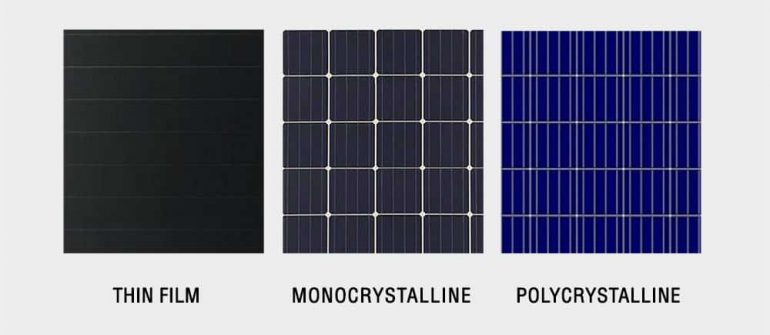It can be very confusing on how to select the right equipment for a solar system because there are so many different options to choose from. When making that decision, it is best to remember to do the research and gather all the information before making the choice. The following guide will help you in the selection process.
All solar panels will perform on your roof but make sure they come from a reliable manufacturer. The decision on picking a certain solar panel comes down to personal preference. You can’t go wrong with your choice.
Monocrystalline vs. Polycrystalline Cells
Monocrystalline cells are more efficient than polycrystalline cells, however, polycrystalline cells have developed to the point that the difference between the two are minimal. Efficiency only matters when space is limited. Monocrystalline panels are smaller and are the best choice for when the space is limited.
There is a belief that a polycrystalline panel produces less power than a monocrystalline panel, but that is not true. A 280 W solar panel will produce the same amount of energy regardless of the type of cell that it uses. The only difference in this case is that a monocrystalline panel might be smaller in physical size.
The monocrystalline cells tend to perform better in overcast weather and low-light conditions. With that being said, polycrystalline cells are not bad performers in low-light conditions and the differences between the two are in most cases neglectable.
The Color of the Panels
When choosing the color of a solar panel it is personal preference. Monocrystalline cells are darker, close to black; polycrystalline cells are more of a blue color. The cell color cannot be selected or changed, however, you can select the colors of the aluminum frame and the back sheet (which is the background color behind the solar cells).
The frame of the panel comes anodized in natural aluminum or black. To improve esthetics, most residential panels now come with black frames. A black sheet is popular in residential installations where esthetics are important. The black finish adds cost to the final product, therefore most commercial applications have large panels with an aluminum-colored frame and white back sheet, given that they are usually installed out of sight.
Panels with black back sheets operate at a higher temperature, therefore losing efficiency. The loss is not significant but will increase the operating temperature, especially in hot climates. If efficiency is your ultimate goal, a white back sheet is recommended.
